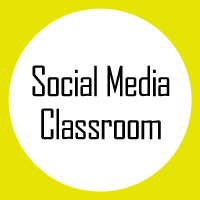http://wiki.nus.edu.sg/display/CNMSOCMED/Home
Giorgos Cheliotis, National University of Singapore
This begun as an effort to create what was at inception one of the first classes on social media for tertiary students. The task was to develop a social media canon where there was none before, and imagine what a social media classroom could be. My understanding of social media was inseparable from openness and participation. But how could we encourage a spirit of openness and student participation in a rather rigid university environment, where most classes were taught podium-style or in a rather formulaic seminar format? In other words, the challenge was to imbue the class with the same spirit of openness that I saw in some social media applications, while also respecting the teaching and learning routines that students and administration were used to. I did this by maintaining the basic format of lecture plus discussion, but inviting student teams to teach every week’s topic, invent games and in-class activities. We also moved class discussion to Facebook and Twitter, the two most popular social media platforms here in Singapore. Finally, I made sure that all class materials are open to the public. By making students complicit in the development of the curriculum, and by making class discussion and materials open to the public at large, we were able to enormously improve student engagement, challenge students to think like teachers (and vice versa) and, finally, engage more people from the university community and beyond than we could have ever hoped for. The social media classroom we developed has been featured in the Chronicle of Higher Education and has been used repeatedly as a case study for using technology in education at our institution. The lecture notes I made publicly available have been downloaded by thousands of people.
Instead of developing or using a suite of open tools specifically tailored to education purposes, we experimented with using the tools that students already love to use for communication, no matter whether they are commercial, proprietary, or open, so long as they are publicly accessible. In other words, the main objective has been to ‘open up’ education and communication, which we achieved with a mix of open and non-open tools and platforms.
Additional resources:
Home page of the teaching project, hosted on a university wiki
Lecture notes on social network analysis
Youtube videos uploaded by students on their social media projects
Tags: Open Education Resource, School, Social Media
Posted in Gallery |
